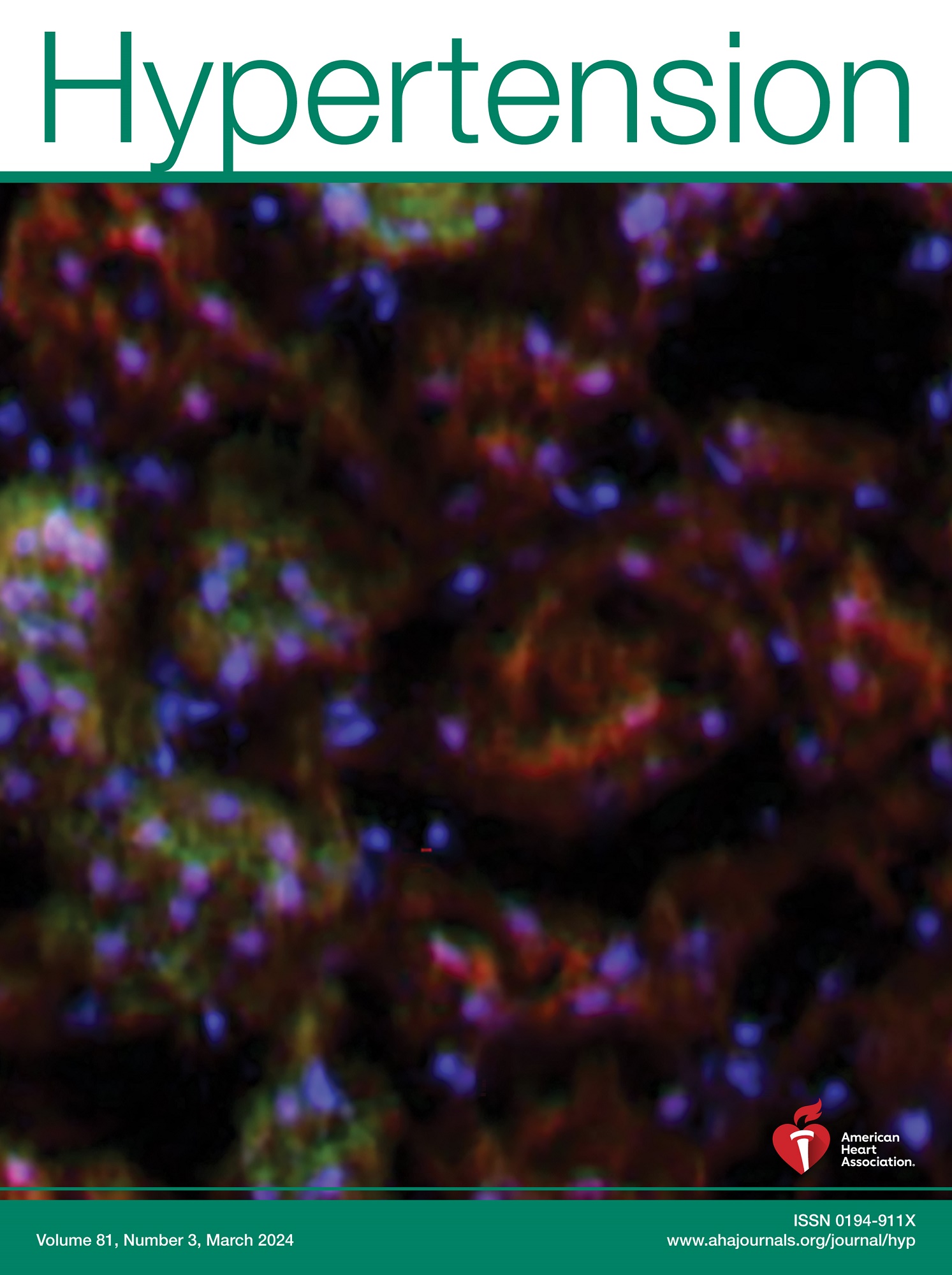Large-Scale Proteomics Reveals New Candidate Biomarkers for Late-Onset Preeclampsia.
IF 8.2
1区 医学
Q1 PERIPHERAL VASCULAR DISEASE
引用次数: 0
Abstract
BACKGROUND Preeclampsia is classified as either a more severe early onset or a more prevalent late-onset form. Lower PlGF (placental growth factor) and increased sFlt-1 (fms-like tyrosine kinase-1) in maternal circulation are promising biomarkers, yet they lack specificity for preeclampsia. METHODS We quantified ≈7000 proteins in 673 samples collected from 89 patients with late-onset preeclampsia and 91 controls at T1 (15-22), T2 (22-30), and T3 (30-42) weeks. Elastic net and random forest models were fitted and evaluated by cross-validation. Differential abundance analysis followed by functional profiling, was used to identify and interpret protein changes. RESULTS An increase in protein differential abundance in late-onset preeclampsia was observed with advancing gestation, reaching 806 proteins at T3 related to angiogenesis, cell adhesion, and extracellular matrix remodeling. FAAH2 (fatty acid amide hydrolase 2), SIGLEC6 (sialic acid-binding Ig-like lectin-6), IL17RC (interleukin-17 receptor C), HTRA1 (serine protease), sFlt-1, and 47 other proteins dysregulated at T3 were validated in a reanalysis of a ≈5000 protein Norwegian data set. Random forest models with 20 proteins showed high accuracy at T3 (area under the curve [AUC], 0.83 [0.77-0.89], sensitivity 59%) even in cases not yet diagnosed at sampling (n=31, AUC, 0.80 [0.71-0.90], sensitivity 58%), outperforming sFlt-1 and PlGF. Moderate accuracy was obtained at T1 (AUC, 0.63 [0.54-0.72], sensitivity 33%) and T2 (AUC, 0.59 [0.50-0.68], sensitivity 17%). Combining maternal characteristics and obstetric history with proteomics data increased accuracy at T1 (AUC, 0.68 [0.59-0.77], sensitivity 28%), T2 (AUC, 0.68 [0.60-0.77], sensitivity 31%), and T3 (AUC, 0.87 [0.81-0.92], sensitivity 69%). CONCLUSIONS The findings confirm the involvement of abnormal trophoblast invasion, angiogenesis, and extracellular matrix remodeling in late-onset preeclampsia, while highlighting new protein alterations consistent across diverse cohorts.大规模蛋白质组学揭示了迟发性子痫前期新的候选生物标志物。
背景子痫前期分为较严重的早发型和较普遍的晚发型。母体循环中PlGF(胎盘生长因子)降低和sFlt-1 (fms样酪氨酸激酶-1)升高是有希望的生物标志物,但它们对先兆子痫缺乏特异性。方法在T1(15-22)、T2(22-30)和T3(30-42)周采集89例迟发性先兆子痫患者和91例对照患者的673份样本中,定量检测≈7000个蛋白。通过交叉验证对弹性网模型和随机森林模型进行拟合和评价。差异丰度分析和功能分析被用来识别和解释蛋白质的变化。结果随着妊娠的进展,迟发性子痫前期的蛋白差异丰度增加,在T3达到806个与血管生成、细胞粘附和细胞外基质重塑相关的蛋白。FAAH2(脂肪酸酰胺水解酶2)、SIGLEC6(唾液酸结合igg样凝集素-6)、IL17RC(白介素-17受体C)、HTRA1(丝氨酸蛋白酶)、sFlt-1和其他47个在T3期失调的蛋白在挪威约5000蛋白数据集中被验证。包含20种蛋白质的随机森林模型在T3(曲线下面积[AUC], 0.83[0.77-0.89],灵敏度59%)即使在采样时尚未诊断的病例(n=31, AUC, 0.80[0.71-0.90],灵敏度58%)也显示出较高的准确性,优于sFlt-1和PlGF。在T1 (AUC, 0.63[0.54-0.72],灵敏度33%)和T2 (AUC, 0.59[0.50-0.68],灵敏度17%)时获得中等准确度。将产妇特征和产科史与蛋白质组学数据结合可提高T1 (AUC, 0.68[0.59-0.77],敏感性28%)、T2 (AUC, 0.68[0.60-0.77],敏感性31%)和T3 (AUC, 0.87[0.81-0.92],敏感性69%)的准确性。结论:研究结果证实了异常滋养细胞侵袭、血管生成和细胞外基质重塑在迟发性子痫前期的参与,同时强调了不同队列中一致的新蛋白改变。
本文章由计算机程序翻译,如有差异,请以英文原文为准。
求助全文
约1分钟内获得全文
求助全文
来源期刊

Hypertension
医学-外周血管病
CiteScore
15.90
自引率
4.80%
发文量
1006
审稿时长
1 months
期刊介绍:
Hypertension presents top-tier articles on high blood pressure in each monthly release. These articles delve into basic science, clinical treatment, and prevention of hypertension and associated cardiovascular, metabolic, and renal conditions. Renowned for their lasting significance, these papers contribute to advancing our understanding and management of hypertension-related issues.
 求助内容:
求助内容: 应助结果提醒方式:
应助结果提醒方式:


